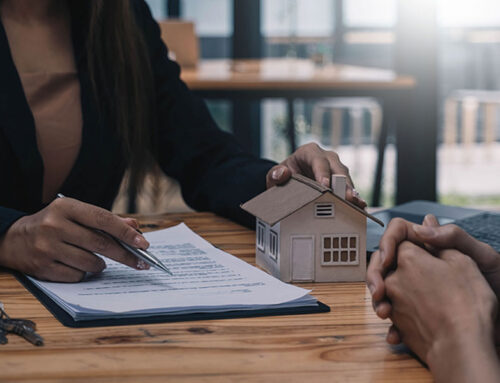After reading a piece that I wrote about investing in real estate rentals, a gentleman named Curt emailed me about his decision to buy, rehab, and sell properties rather than hold them as rentals. Investing in single-family homes to renovate and resell is my preferred strategy, so I’m always happy to strike up a conversation—or a correspondence—with a new investor who’s thinking of doing the same. As I know from personal experience, there are risks to residential property investment no matter which strategy you choose. If I can save a new investor from experiencing some of the pitfalls that I encountered when I started out, then I feel like I’ve done my job paying it forward. After all, proactively safeguarding your ROI as an investor is mission-critical to being able to build a business in real estate.
How to Protect Your Returns When Investing in Single-Family Homes
As I started to craft my response to Curt about the mistakes I made as a young investor, advising him on what not to do, it occurred to me that a better use of our time would be to tell him what he ought to do. Knowing how to buy and sell homes for profit certainly includes learning what you should avoid. But, looking out for what can go wrong almost always becomes second nature when you work hard towards ensuring that things go right. So, here are the tips I gave Curt to help him achieve optimal returns:
- Make a plan and stick to it. Creating a real estate investment business plan before you even consider buying your first house protects your returns in a couple of ways. First, knowing from the get-go how much money you’d like to make and how many homes you need to buy to achieve that will sharpen your focus on work that matters, like taking the time to follow up on leads. Otherwise, you could fall prey to activities that don’t positively impact your bottom line. Additionally, with an understanding of your market and an outline of where you should invest and when you’ll better weather any ups and downs that wreak havoc on less-prepared investors. And, with a clear set of goals and a measurable strategy for how to reach them, you’ll also be more likely to make good investments by avoiding emotional decisions and, instead, strive to keep your professional progress on track.
- Buy properties at a discount. To realize decent returns at all, you’ve got to purchase homes at as steep of a discount as possible. Since you need to have room to pay for a rehab and absorb any surprise costs that crop up, buying low is critical. This can be difficult to do unless you have a way of finding off-market properties that other investors, or traditional homebuyers, aren’t competing for. If you get caught in a competitive buying frenzy and spend too much, your returns in the short run, and your business in the long run, could suffer.
- Carefully cost out your rehabs. Part of knowing what to offer on a house in the first place and of protecting your potential returns at selling time is carefully costing out the rehab. If you’re unable to properly evaluate your residential investment property, you simply won’t know how much you can reasonably spend on the property and still realize a good return. And, when it comes to repairing potential sewer pipe problems or determining the extent of a potential termite infestation, taking a stab at numbers in the dark is dangerous. Local labor and material costs for many such repairs vary across the country and even within cities. They can shift depending on the current market, too. Hit the wrong mark with your estimates and you could hit bottom.
- Invest in insurance for flipping houses. One of the best ways to keep your potential ROI safe is to purchase protection for your property. When you buy property insurance for flipping houses, you are ensuring that your invested sweat equity doesn’t go to waste should a disaster—natural or manmade—try to lay waste to the house and your bank account. Without the right coverage, a heavy rainstorm on an unfinished roof or stolen copper piping from a newly finished kitchen can set you back in both time and money. The last thing you need when you’re trying to realize decent returns is to have to spend on something twice.
- Sell your properties at full market value. While there are a number of ways to sell your investment property quickly, offering it for less than full market value should not be one of them. Of course, a lack of confidence could stand in your way. It’s common for new investors to underestimate their skills and, therefore, undermine their calculations. But, confidence will come with time. In the meantime, assuming you have a tool for calculating all of your costs and estimating your ARV, you should be able to count on your numbers, not your emotions, to protect your projected ROI.
These guidelines should not be skipped over as they are important in protecting your potential returns and growing your investment business. I get it, though. It can be a lot to remember, especially when you’re focused on just getting things off the ground and trying to learn your craft at the start of your real estate investing career. Fortunately, there are tools out there that can help you streamline the work of running the numbers. And, one of the best real estate investing tools I’ve ever found comes with a team that can provide support with everything else.
Invest in Single-family Homes With Some of the Top Tools and Team
On my first couple of investment properties, I did alright—but, I could have done better. I had mediocre valuation tools at my disposal and, honestly, not a whole of confidence. So, I either spent too much money on my rehabs or didn’t price my properties at full market value. I always got a little something in the end, but for a while, it looked like my full-time ambitions might only earn me a part-time income. Unfortunately, I know some real estate investors who fared worse.
They decided to give up investing in real estate, whereas I decided to get support by becoming an independently owned and operated HomeVestors® franchisee. And, when I did, I started to get my numbers right thanks to HomeVestors®’ proprietary valuation software, ValueChek™. Not only can I correctly calculate all the costs associated with buying, renovating, and selling homes, I feel more confident about being able to do it. Of course, it also helped that I have the support of my fellow local and regional HomeVestors® franchisees and my Development Agent whenever there are questions about the numbers. Ever since then, I can purchase and sell my properties at the right price, realizing the kind of returns I need to see to build a solid business. Soon Curt, as a new franchisee, will be able to do the same—right from the start of his career.
Join the team that can give you access to some of the best tools for realizing potentially better ROIs and a solid support team too. Contact HomeVestors® about becoming a franchisee today!
Each franchise office is independently owned and operated.
Contact
"*" indicates required fields






